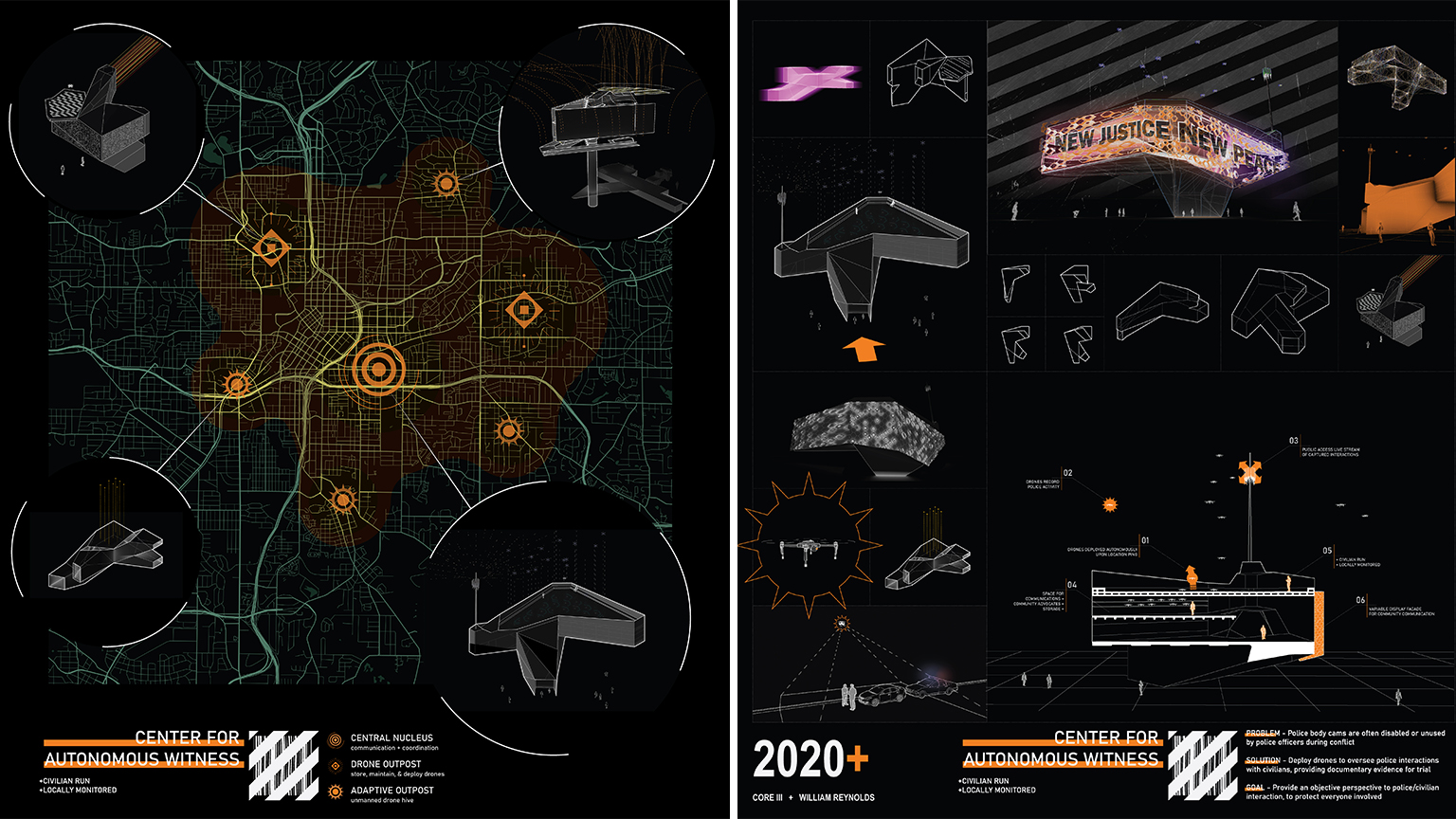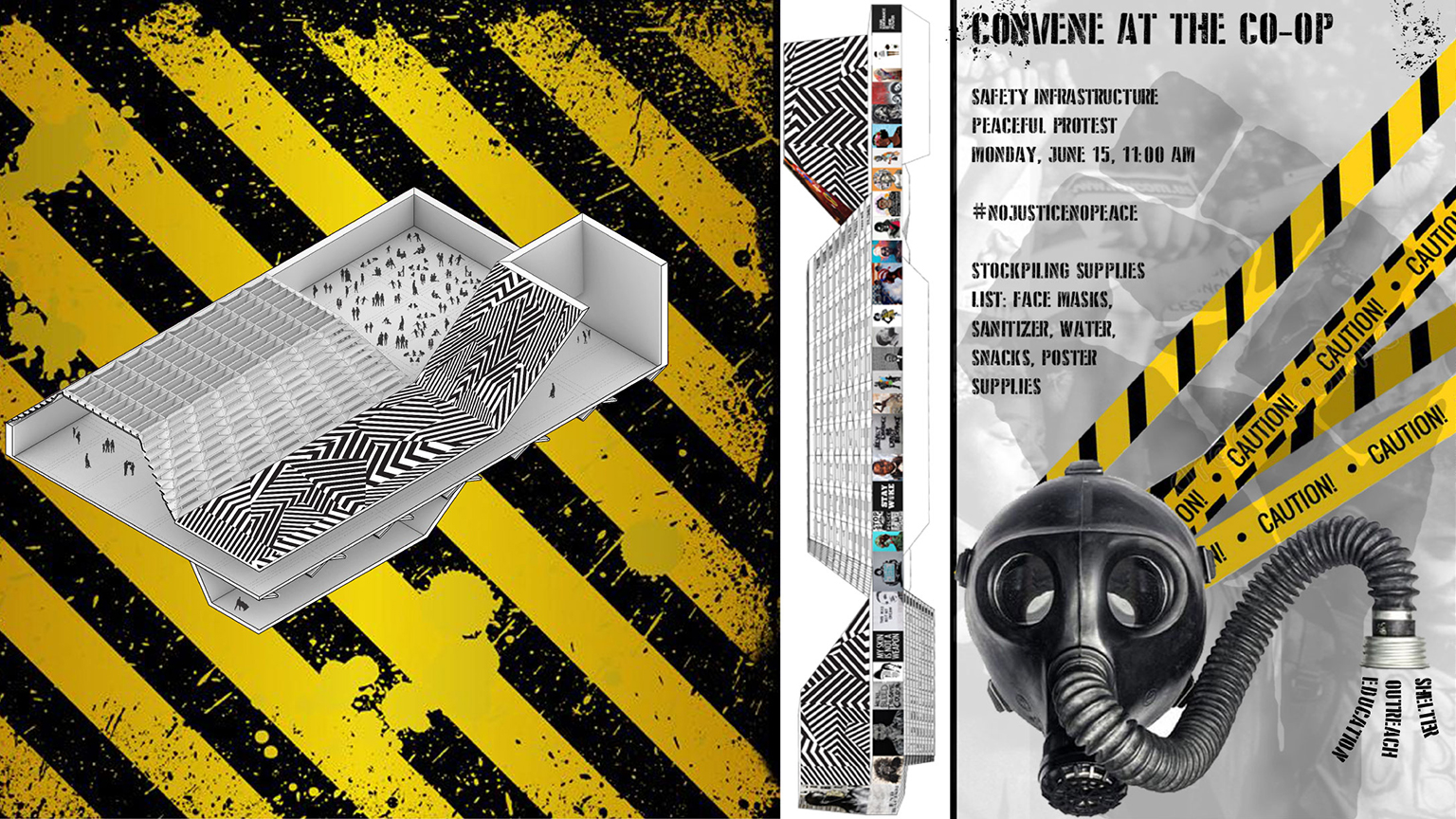Student Wins Hip Hop + Architecture Competition

Student Wins Hip Hop + Architecture As Design Justice Competition
July 16, 2020 | Atlanta, GA
By Carmen New
Students enrolled in the 3.5-year Master of Architecture program are required to complete summer studio following their first year. Keith Kaseman, assistant professor and director of the Spatial Futures Lab, based the summer studio titled “Studio 2020+” on exploring deployable systems to aid in a pandemic state, which served to directly analyze current events and their impact on architecture and infrastructure.
“Studio 2020+ set out to methodically tap into and iteratively cultivate participants’ design imaginations during these unprecedented and incredibly challenging times,” said Kaseman. “Initially calibrated to develop a collective array of architectural typologies tied to projective scenarios within a post-COVID world, the police killing of George Floyd ignited sustained nationwide protests against racism, police brutality, and racial injustice approximately halfway through our five-week long semester.”
“Recalibrating the studio at that point involved a week of attempting to synthesize our raw emotions, while simultaneously building design arsenals and sharpening them towards new directions,” said Kaseman. “With two weeks left, all seventeen students were tasked to initiate and deliver final projects with full freedom to tackle any issue of urgency at hand.”
Hip Hop + Architecture As Design Justice

Master of Architecture students Will Reynolds and Breanna Rhoden decided to examine issues of social injustice in their projects. During their final review, it was suggested by their jurors that Reynolds and Rhoden submit their projects to the Hip Hop + Architecture As Design Justice competition.
The competition was hosted by Michael Ford, also known as The Hip Hop Architect. Ford uses music to critique the built environment in its past, present, and future. In the summer of 2017, the Georgia Tech School of Architecture brought to campus the Hip Hop Architecture Camp, a one-week camp for middle school students in under-represented communities and connects them with professionals in architecture, urban design, and their communities. Students create architectural models, a Hip Hop Architecture track, and a music video to summarize their design.
The Hip Hop + Architecture As Design Justice competition’s call for submissions asked, “How will spaces look in a Just City? A city which has defeated and dismantled racism? What tools will help us get there?”
On Monday, June 22, it was announced that Reynolds received the top prize in the competition and Rhoden was recognized among the top 20 submissions.
The Winning Projects
The first rule the recent Design Justice competition required that submissions be “inspired by a Hip Hop lyric, track, or album title focused on imagining better communities.”
In his winning entry, Reynolds referenced lyrics from AmeriKKKan Idol by Joey Bada$$, which says, “The scary part, boys and girls/Is most of these stories don’t make it to the news and reach mass consciousness/It is for sure time that we as a people stand up for acknowledgment/And accomplishment of what we call human rights/It is time to rebel, better yet, raise hell.”
“The intent of this project is to facilitate a new form of justice, one that holds those enforcing the law to a new standard of honesty and transparency,” Reynolds said of his project. “This system of drone outposts is dispersed throughout a city. The structures, or outposts, deploy drones when a civilian reports a police stop. Ideally, this report could be vocally activated with a smartphone –‘Hey Siri, the police are here.’ The drone arrives onsite and records the police throughout the interaction. The information is streamed back to the outpost to be monitored by civilians.”
“These drone outposts would act as a facility to store and maintain drones, store, and broadcast information securely, and create a safe space for civilians,” Reynolds added. “This new building typology could be freestanding or occupy existing structures like the space between billboards.”
“I chose the song by Lil Baby called “The Bigger Picture” because it directly speaks to the Black Lives Matter movement currently taking place across the globe during this unprecedented time and how we have to start by inspiring future generations to create a better future through addressing the problems happening now,” said Rhoden about her project, which proposed a new place of refuge, resiliency, and celebration for the community.
“The social and economic effects of the pandemic along with the systemic injustice has and will continue to affect the mental health of the community,” Rhoden continued. “My hope is that this newfound type of architecture will bring solidarity, confidence, and provide some comfort to those putting their lives on the line protesting for racial equality.
Learn more about the Hip Hop + Architecture As Design Justice Competition.
Media Contact:
Carmen New
Marketing and Events Coordinator II
Georgia Institute of Technology | School of Architecture
carmen.new@design.gatech.edu